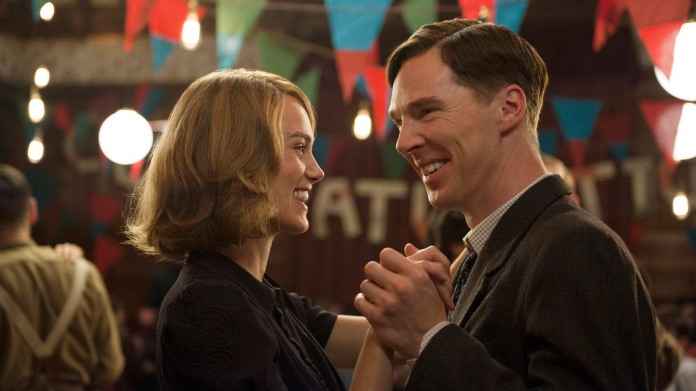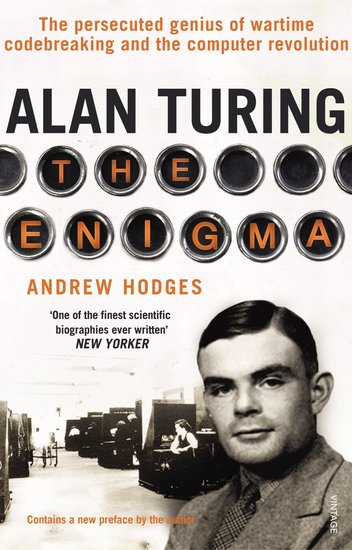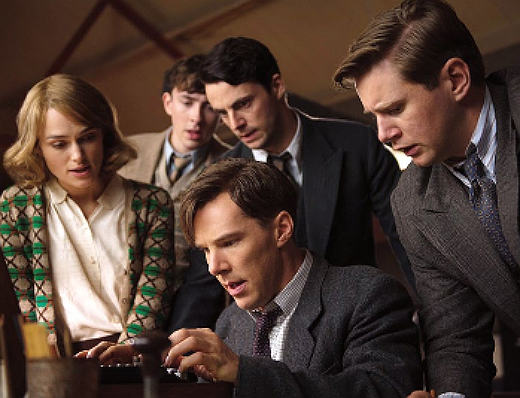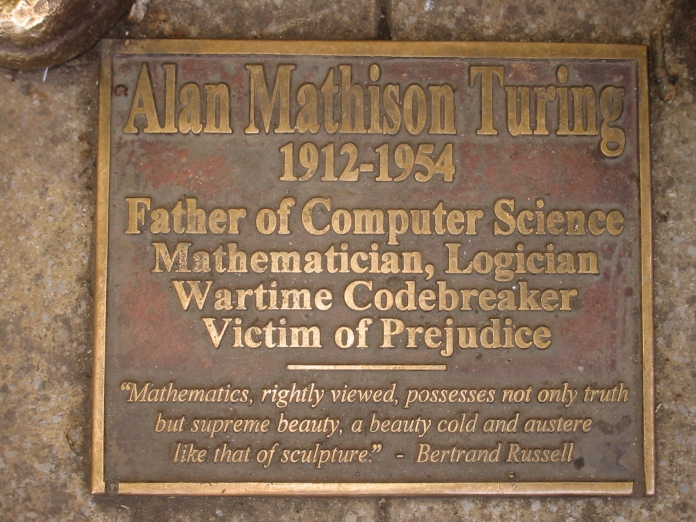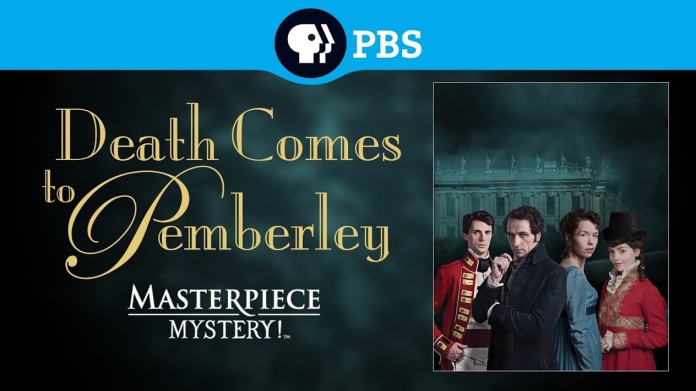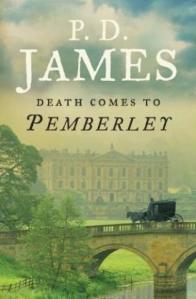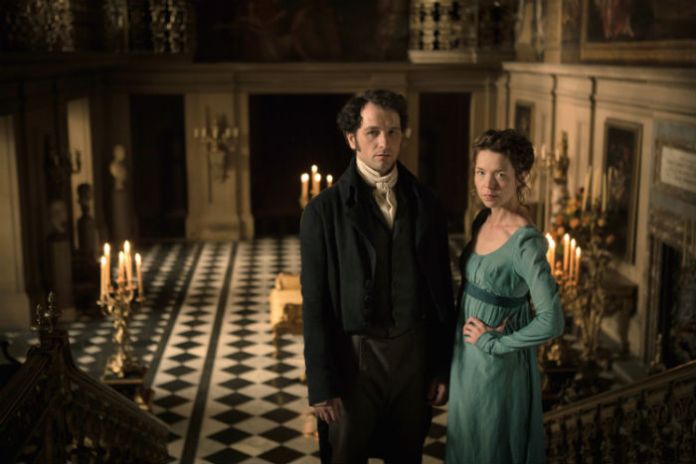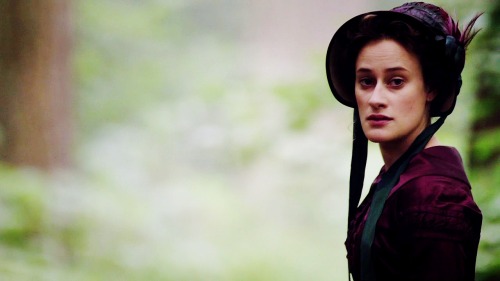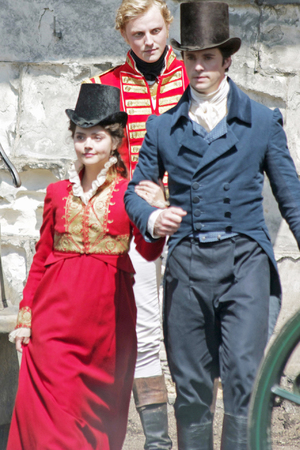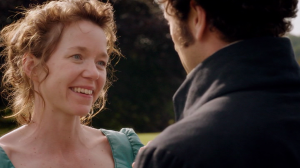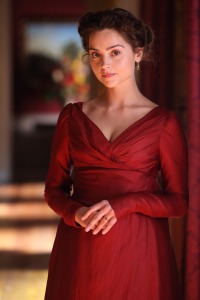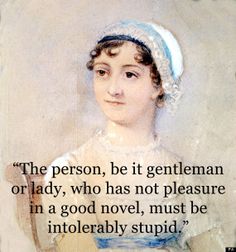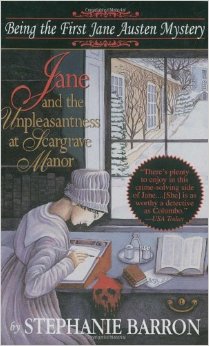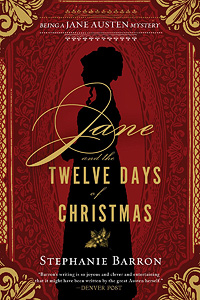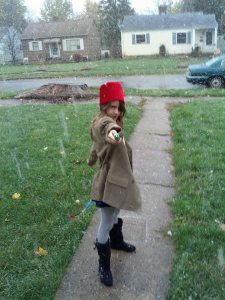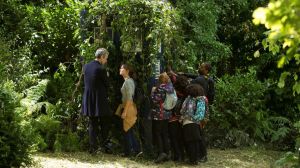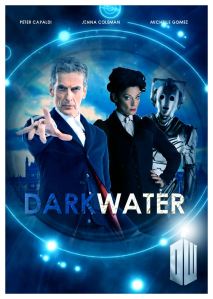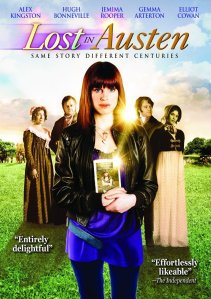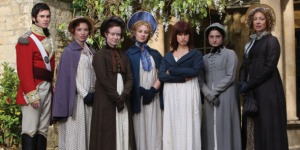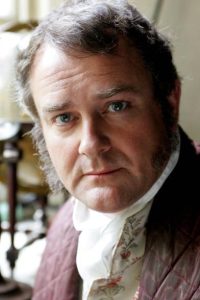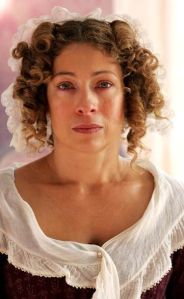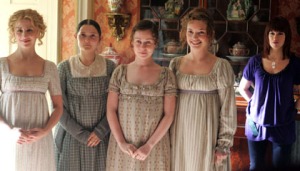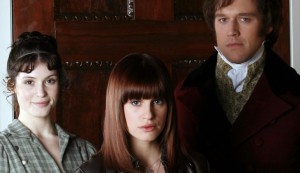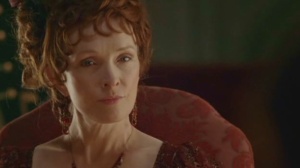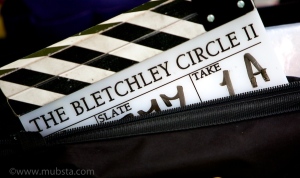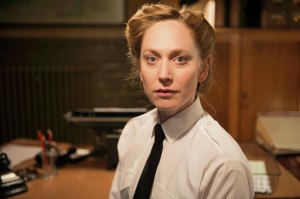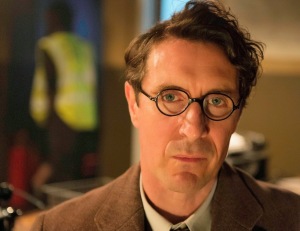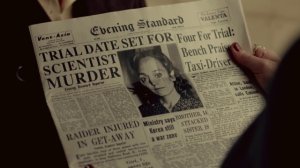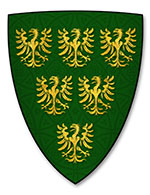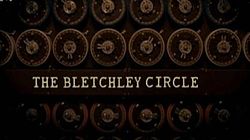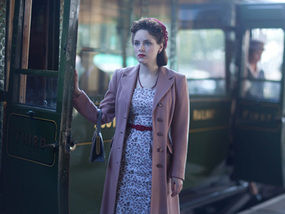“Dear God, what is it like in your funny little brains? It must be so boring!” – Sherlock Holmes, SHERLOCK

I’ve been putting off writing a blog post about the BBC’s SHERLOCK (based on the Sherlock Holmes stories of Arthur Conan Doyle) not because I don’t like it. In fact, I probably like the show way too much. I fear that I won’t do a good enough job explaining just how amazingly, fabulously, wonderously great this show is! But I’ve decided it’s time to at least try. I will never be able to explain how glorious the show actually is but here goes…..
I stumbled upon SHERLOCK a few years back on PBS’s Masterpiece Mystery. I was immediately hooked. I was thrilled to find out that the “episodes” are longer than usual TV dramas (a full hour and a half versus the usual forty five minutes). Woo hoo! This elation was short lived however when I found that this means that each season has only three episodes. Three episodes! Boo.
So in an attempt to sufficiently explain this series, I decided to rewatch the very first episode, trying to see it as a new viewer. Not sure how this will work. I’ve seen every episode of this show many, many, many times. But here goes:
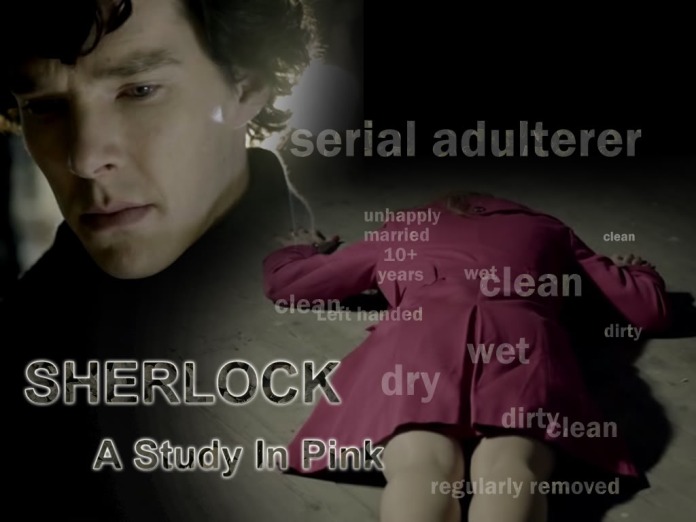
“A Study in Pink” was first broadcast on BBC One on 25 July 2010and is inspired by Doyle’s A Study in Scarlet. It opens with war flashbacks. A man wakes up from his nightmare about the war and cries. He is then shown sitting on a bed in a drab room. Everything is beige – the carpet, the walls, the bedding. It’s just so depressing. He walks with a cane; we see he has a pistol in his drawer; he gets out a laptop. We see his blog website, titled “The Personal Blog of Dr. John H. Watson”. Other than the title, there is nothing there. Nothing. Cut to him talking with a therapist. “John, you’re a soldier. And writing a blog about everything that happens to you will honestly help you.” “Nothing happens to me.” Cue the music. And btw the title sequence for SHERLOCK is one of my favorite ever – just amazing.
Interspersed with scenes of various individuals (apparently) killing themselves, we see a police press conference where the reporters and police all receive texts telling them that they’re wrong.

This is our first clue that this retelling of the Sherlock Holmes stories will truly be a modern one. Instead of just updating costumes and locations, this show changes specific things (use of text messages, tabloids, TV reports) within the Holmes stories to make it contemporary. Yet the show still manages to remain true to the original stories.
We next see John (played by Martin Freeman of The Hobbit, The End of the World) as he (fortuitously) meets up with a friend from school. The friend then introduces him to another man who, like John, is looking for a roommate. And thus we are introduced to Benedict Cumberbatch’s (The Hobbit, Star Trek, 12 Years a Slave), Sherlock Holmes, “21st century London’s go-to consulting detective”. Holmes looks downright psychotic as he beats a dead body with a riding crop. The meeting between Sherlock and John is classic Conan Doyle as, by way of a greeting, Sherlock asks John “Afghanistan or Iraq?” They meet to see the apartment and, after Mrs. Hudson describes John as “the sitting down type”, John joins Sherlock as he investigates four duplicate “suicides”.
Sherlock: “Seen a lot of injuries? Violent deaths?” John: “Of course. Yes. Enough for a lifetime, far too much.”
Sherlock: “Want to see some more?” John: “Oh, God, yes.”
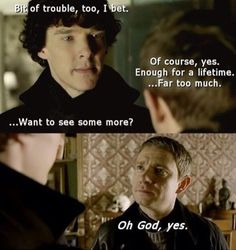
Cue the music again. They’re off to solve the crimes (Spoiler alert: they solve it). John is a bit amazed about Sherlock’s skill at deductions and thus we get this brilliant exchange in the back of a taxi.
Sherlock: Okay, you’ve got questions…When I met you for the first time yesterday, I said “Afghanistan or Iraq?” You looked surprised. John: Yes. How did you know? Sherlock: I didn’t know, I saw. Your haircut, the way you hold yourself, says military. But your conversation as you entered the room said trained at Bart’s, so army doctor. Obvious. Your face is tanned, but no tan above the wrists: you’ve been abroad but not sunbathing. The limp’s really bad when you walk, but you don’t ask for a chair when you stand, like you’ve forgotten about it, so it’s at least partly psychosomatic. That says the original circumstances of the injury were probably traumatic: wounded in action, then. Wounded in action, suntan: Afghanistan or Iraq.
John: You said I had a therapist.Sherlock: You’ve got a psychosomatic limp. Of course you’ve got a therapist. Then there’s your brother. Your phone—it’s expensive, email enabled, MP3 player. But you’re looking for a flat-share, you wouldn’t waste money on this. It’s a gift, then. Scratches—not one, many over time. It’s been in the same pocket as keys and coins. The man sitting next to me wouldn’t treat his one luxury item like this, so it’s had a previous owner. The next bit’s easy, you know it already. [the back of the phone has been engraved “Harry Watson — from Clara xxx”]
John: The engraving? Sherlock: Harry Watson: clearly a family member who’s given you his old phone. Not your father, this is a young man’s gadget. Could be a cousin, but you’re a war hero who can’t find a place to live. Unlikely you’ve got an extended family, certainly not one you’re close to, so brother it is. Now, Clara: who’s Clara? Three kisses says a romantic attachment. Expensive phone says wife, not girlfriend. Must’ve given it to him recently; this model’s only six months old. Marriage in trouble, then—six months on, and already he’s giving it away? If she’d left him, he would’ve kept it. People do, sentiment. But no, he wanted rid of it—he left her. He gave the phone to you, that says he wants you to stay in touch. [beat] You’re looking for cheap accommodation and you’re not going to your brother for help? That says you’ve got problems with him. Maybe you liked his wife, maybe you don’t like his drinking.
John: How can you possibly know about the drinking? Sherlock: Shot in the dark. Good one, though. Power connection: tiny little scuff marks around the edge. Every night he goes to plug it in and charge but his hands are shaky. You never see those marks on a sober man’s phone, never see a drunk’s without them.
John: [slowly] That was amazing. Sherlock: [deadpan] You think so? John: Of course it was. It was extraordinary. It was quite… extraordinary. Sherlock: That’s not what people normally say. John: What do people normally say? Sherlock: “Piss off!“
So who are the brilliant minds behind SHERLOCK? The same ones currently responsible for Doctor Who. While working on Doctor Who, Mark Gatiss and Steven Moffat would ride the train to work together. They would discuss how much they enjoyed the Sherlock Holmes books and would love to see a modern retelling of them. Eventually they decided that they would be the tellers and thus SHERLOCK was born.
Steven and I were on many, many trains to Cardiff for Doctor Who and we always seemed to end up talking about how much we love Sherlock Holmes. We eventually danced around the shameful admission that our favorite versions are still the Basil Rathbone movies, particularly the ones in the forties when they brought it up to date and battled the Nazis and stuff like that. They seemed to have more of the flavor of the original stories than a lot of more careful recreations. That’s not to say those ones aren’t brilliant, because they are and everyone has a different favorite Sherlock Holmes, just like they have a favorite Doctor. We thought ‘Why don’t we just do it now?’ That immediately means it doesn’t become about the trappings – the hansom cabs and the fog and Jack the Ripper and the clothes – it becomes about the characters.
Why do I love
SHERLOCK so much? First of all, the original stories are great. To this you add the genius of Doctor Who’s Mark Gatiss and Steven Moffat. The writing is witty and fast paced. It’s funny but not in a sitcom kind of way. You actually have to pay attention to “get it”. Like he does on Doctor Who, Moffat loves to drop little clues early on that we barely notice. Then when he comes back to the (now no so little) clues, we’re amazed that we missed it. The cast is amazeballs! Mark Gatiss himself plays Sherlock’s brother (and self professed arch enemy)
Mycroft Holmes.
Rupert Graves (Doctor Who, The White Queen) is “the long suffering”
Detective Inspector Lestrade. The adorable
Una Stubbs ( is their landlady (not their housekeeper:)
Mrs. Hudson. Other cast members in this episode include:
Louise Brealey (as Molly Hooper),
Vinette Robinson (Sgt. Sally Donovan), and
Jonathan Aris (Anderson). Later in the series, we get to see
Andrew Scott as Moriarty and…..well that is going to have to be a separate post.
So is it just me? Am I the only one obsessed with this series? I’d have to say, um, no.
SHERLOCK has been nominated for many awards (BAFTAs, Emmys, Golden Globe) and has won quite a few. At the 2011 BAFTA awards, the show as a whole won the award for Best Drama Series. Martin Freeman and Andrew Scott were both nominated for Best Supporting Actor with Freeman winning the award. Benedict Cumberbatch was nominated for Best Actor. In 2014, SHERLOCK received the most number of wins at the 66th Primetime Emmy Awards including Outstanding Writing for a Miniseries, Movie or a Dramatic Special for Steven Moffat, Outstanding Lead Actor in a Miniseries or a Movie for Benedict Cumberbatch, and Outstanding Supporting Actor in a Miniseries or a Movie for Martin Freeman. In 2011, the show also won a Peabody Award.

Steven Moffat
SHERLOCK is the UK’s most watched TV series since 2001. It has quite an extensive and, uh, enthusiastic fandom. Witness: this, this, this, this. If you’re looking for more rational info, try this, this, this,…..actually you know what? Just google Sherlock and fans or fandom or any variation of the word “fanatic” and you’ll see what I mean. You can also check out some of their videos but, I WARN YOU, be careful going down that rabbit hole. We may never see you again. Seriously. But if you’re feeling brave, here you go.
Basically – See? It’s not just me. In fact, Sherlock has spawned a bit of a cultural movement.
You can find Sherlock at most libraries, online, Netflix, Vudu. More in depth information can be found here. And in case you’re wondering about an ETA for Series 4, you can find news (and by “news” I really mean rumors) here, here, here.


